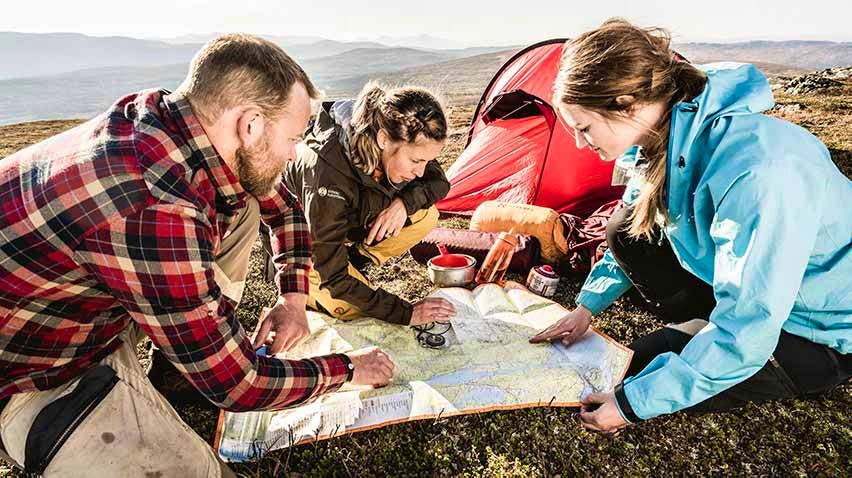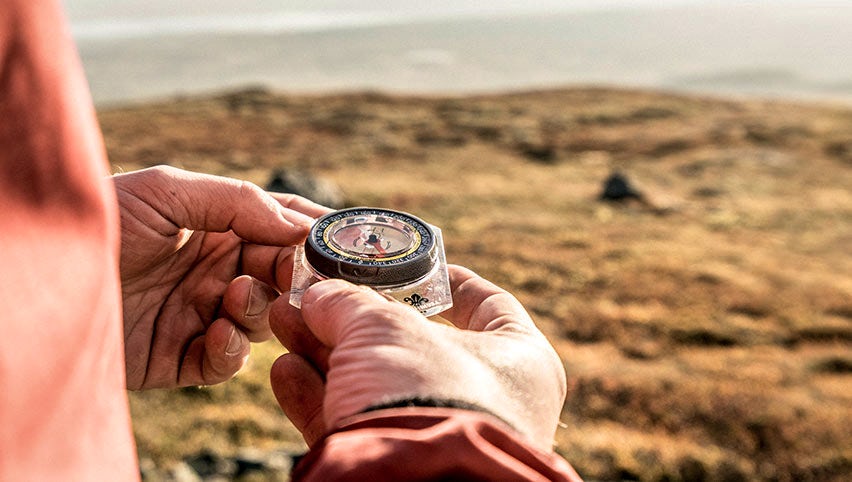
Map and compass
Along a marked trail, you can hike without constantly checking the map or using the compass. However, you should always carry a map and a compass with you. If you venture off marked trails, the map becomes crucial for planning your route, making wise decisions, and navigating correctly.
It is both exciting and important to sit down with the map to plan tomorrow’s hike. You can see what awaits you, plan breaks, identify where you can find water, and note any difficulties along the way.
Tips! On the majority of our hiking trail web pages, there are interactive maps with distances, elevation profiles, points of interest, and much more.
Maps are perishable – always use the latest edition. Trails can be rerouted or closed, new trails, bridges, and shelters can be added. So even though nature changes very little, much can happen with all the printed information on the actual topographic map.
Digital maps for downloading to your GPS or computer are also available for purchase, from the digital map store at Lantmäteriet.
Physical maps can be purchased from retailers such as Kartbutiken.se (opens in new tab), where members receive a discount.


Compass
The compass helps you maintain your direction, even in poor weather. You can also orient yourself to your surroundings; determine the directions and identify which mountain peak you are looking at. A GPS can be useful to have, but it is absolutely not necessary. If you learn how to use a compass for aiming, you can, just like with a GPS, determine your exact location. This is an invaluable skill in case your GPS run out of batteries.
How to use a compass
Discover more

Mountain guide
Find important information about mountain safety, waste management, and what it’s like to stay in a mountain cabin.

Mountain safety
Learn about avalanches, find out how to best prevent injuries, or read about how to safely ford rivers during your hike.

Mountain hiking
The Swedish mountain range stretches from Treriksröset in the north to Dalarna in the south. Here, breathtaking landscapes and hundreds of miles of marked hiking trails await.